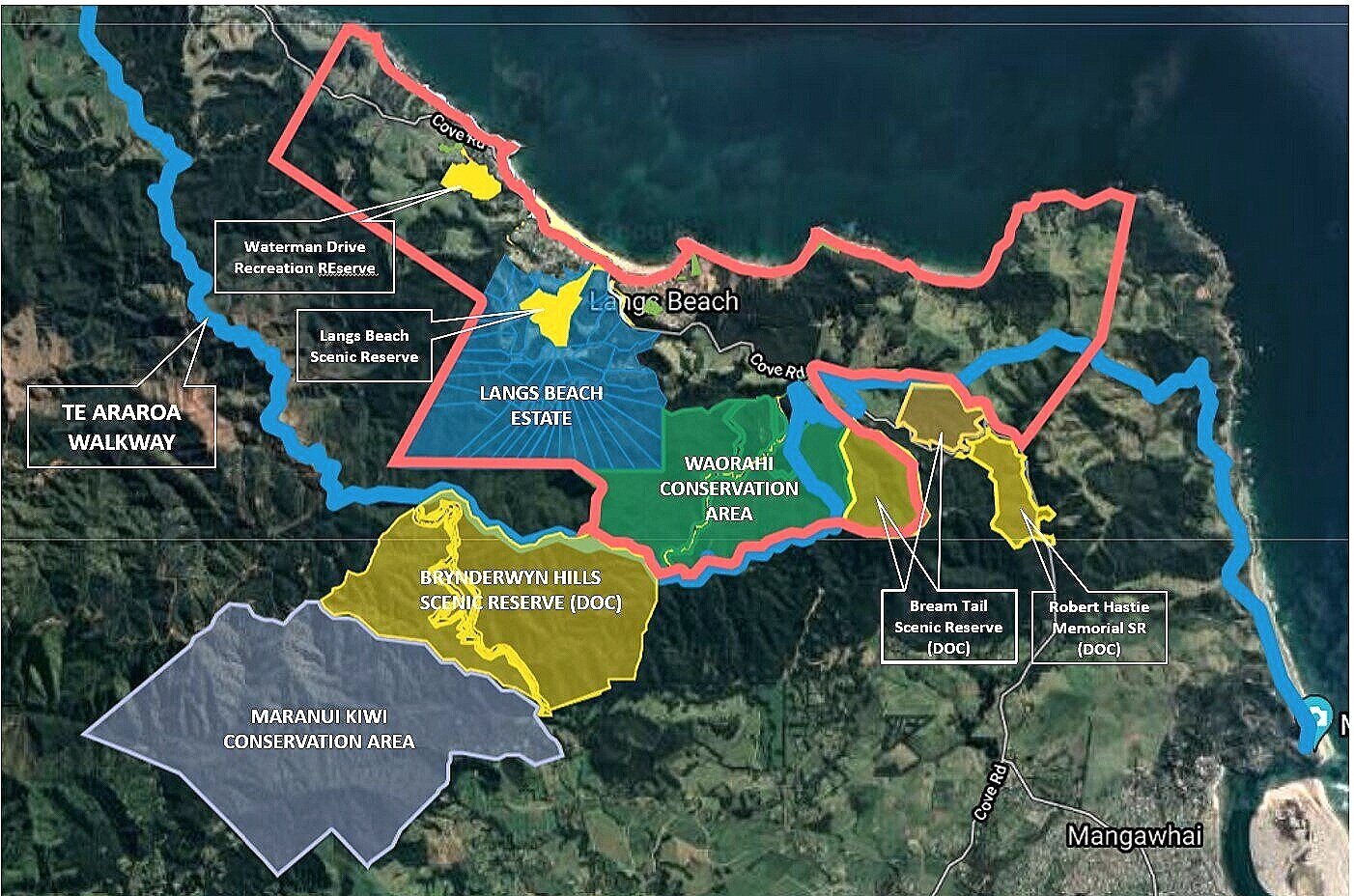Our area of interest
The trust has an interest in all of the public reserves within the area shown within the red line in the map below. In addition, the Trust is building relationships with groups and organisations caring for the significant reserves and conservation areas, both within our area and neighbouring us to the south and east. Wairahi/Langs Beach.
Wairahi reflects what is thought to be the original name Māori gave to this area, as evidenced on some of the earliest maps.
Like many Māori place names, it derives from a composite of words describing the nature of the area - in this case "wai" (water) and "rahi", meaning either "abundant" or "roaring", indicating Māori appreciated the plentiful kai moana or the dramatic loudness of surf, characteristics enjoyed by all those who over time have come to appreciate this area.
Following European settlement in the middle of the 19th century, the area acquired additional names, reflecting two of the first settlers here, Duncan McKenzie and William Lang - giving us the names "McKenzie Cove" and then "Langs Beach".
Our place sits in an area of dramatic change over the last 200 years. Click on the link below to learn more about our history

Early European Settlers
The Nova Scotians began to settle in the Waipu area in the 1850s, two of whom, Duncan McKenzie and William Lang, purchased Crown Grants along this coast in 1856.
Duncan McKenzie purchased the 40 acre block where Lang Cove now sits, and the beach acquired the name McKenzie Cove - a name that still appears on many maps today.
The western half of the beach was settled by William Lang. Over 3 generations the Lang family purchased McKenzie’s and other lots to the east and south and by the end of the 19th century, they owned over 900 acres, from which the current name Langs Beach arose.
1857 Plan showing original Crown Grants for William Lang (160 acres) and Duncan McKenzie (84 acres)

